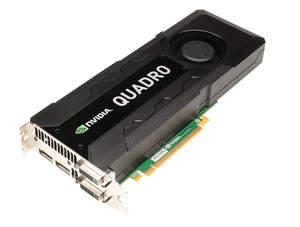Nvidia Next-Gen Maximus Demoed in Videos From SIGGRAPH
Check out our full HD 1080p videos of Nvidia's Kepler GPU-based Maximus 2.0 in action.
At SIGGRAPH 2012 in Los Angeles, Nvidia demonstrated next-gen Maximus, the new update to their Maximus architecture. The next-gen Maximus-configured systems featured at the show used a Nvidia Quadro K5000 together with a Nvidia Tesla K20 GPU computing accelerator, both based on the Kepler GPU architecture.
Note: all videos available in up to 1080p, so please select your desired resolution in the YouTube player options.
This is a demo of the interactions between the Milky Way and Andromeda galaxies, which will happen about 5 billion years from the present. The simulation not only calculates the gravitational reaction between the two galaxies but also calculates the interaction between the gravity of the individual stars in the two galaxies. The updated Maximus platform allows them to use ten times more particles (stars) in the simulation than the previous version. The system running this is a Lenovo D30 Thinkstation equipped with dual Xeon processors and the aforementioned combination of a Quadro K5000 and a Tesla K20.
This demo is or RTT DeltaGen, which is a styling and engineering application, here used to work on a car model. In addition to being able to generate a real-time ray-traced render of the car, it is also calculating the airflow over the car. The system used for this demonstration is identical to the one above.
Chaos Group does a demonstration of the real-time rendering features of their VrayRT renderer, performed on a Dell T7600 Precision workstation in similar configuration to the workstations mentioned above.
These demos - recorded live on the show floor at SIGGRAPH 2012 - should give you some idea of the possible impact of GPU acceleration using the next-gen Maximus architecture.
Contact Us for News Tips, Corrections and Feedback
Get Tom's Hardware's best news and in-depth reviews, straight to your inbox.



